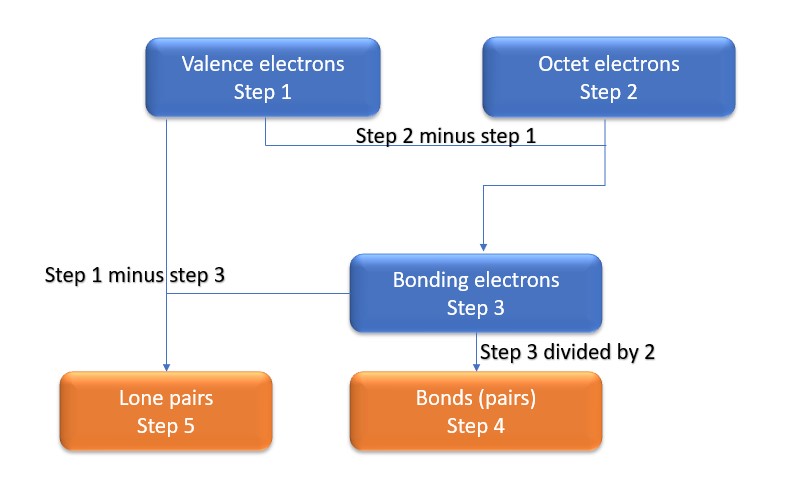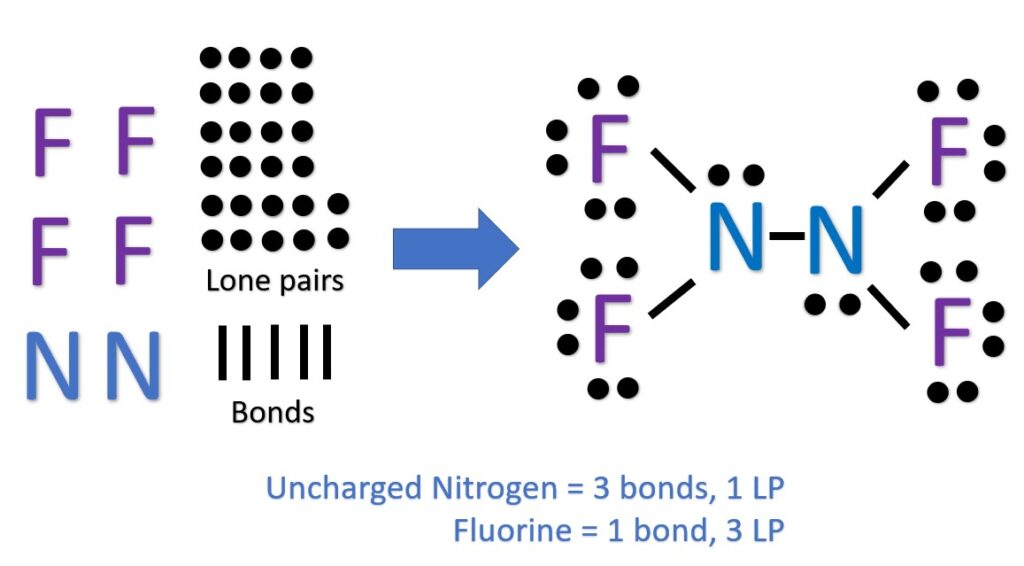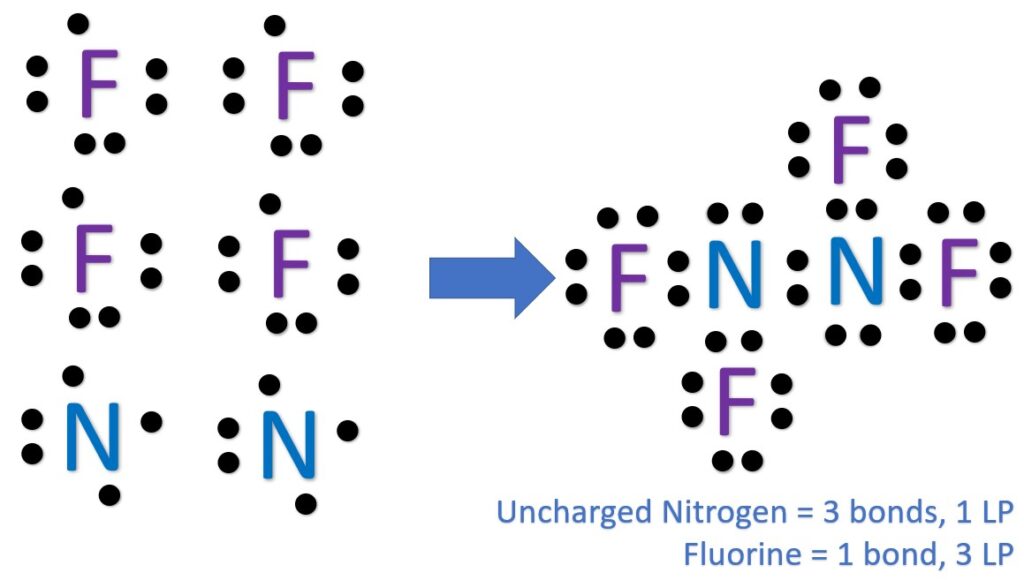What is the Lewis Structure of N2F4?
What is the Lewis Structure of N2F4? The Lewis structure has nitrogen as the central atoms, with two fluorine atoms off each nitrogen. Each fluorine atom has three lone pairs while the nitrogen atoms have one lone pair each.
What is this molecule and what is it used for??
N2F4, also known as dinitrogen tetrafluoride or nitrogen tetrafluoride, is a highly toxic and reactive chemical compound. It has several applications including: Rocket propellant, cleaning agent (particularly semiconductors and electronics manufacturing), fluorinating agent (it can be a source of fluorine for chemical reactions), and polymerization initiator (it can start/catalyze polymerization reactions which are often used in plastics).
Method 1: Step method to draw the Lewis structure of N2F4.
In this method, we find the bonds and lone pairs for the whole molecule, then plug it in to the atoms that we have to get the answer. Here is a little flow chart of how we are going to do this:

We will go through the steps below, but one thing to note here is that all the valence electrons (step 1) are either lone pairs OR bonding electrons. In other words…. Lone Pairs (Step 5) + Bonding electrons (Step 3) = Valence electrons (Step 1) . Let’s go through this example so we can see this a little more clearly.
Step 1: Find valence electrons for all atoms. This is determined by looking at which column on the periodic table the atom is in, ignoring the transition metals in the middle. Add the valence electrons for each atom together.
2N : 2×5 = 10
4F : 4×7 = 28
Total = 38 valence electrons
Step 2: Find octet electrons for each atom and add them together. Most atoms like 8 electrons to form an octet, but there are exceptions.
2N: 2×8 = 16
4F: 4×8 = 32
Total = 48 “octet” electrons
Step 3: Find the number of bonding electrons. Subtract the valence electrons (step 1) from the octet electrons (step 2). This gives the number of bonding electrons.
48-38=10 bonding electrons.
Step 4: Find number of bonds by diving the number of bonding electrons (step 3) by 2 because each bond is made of 2 e-
10 bonding electrons/2 = 5 bond pairs
Step 5: Find the number of nonbonding (lone pairs) electrons. Subtract bonding electrons (step 3) number from valence electrons (step 1).
38 valence -10 bonding = 28 electrons = 14 lone pair
Now, use the information from step 4 and 5 to draw the Lewis structures. Remembering too (this is important):
Uncharged nitrogen likes 3 bonds and 1 lone pair
Fluorine has one bond and three lone pairs
[Note: For more information on the natural state of common atoms, see the linked post here.]
The N atoms will be our central atoms because it is the most electropositive. We then place the fluorine atoms around them, creating one bond to each F atom. [Hint: Nature loves symmetry, so it is always a good idea to start with a symmetrical molecule and see if that works first!] Behold, N2F4 Lewis dot structure.

Another (easier) method to determine the Lewis structure of N2F4:
Alternatively a dot method can be used to draw the Lewis structure.
Calculate the total valence electrons in the molecule.
2N : 2×5 = 10
4F : 4×7 = 28
Total = 38 valence electrons
Now, treat the atoms and electrons like puzzle pieces. Put the two nitrogen atoms in the center and arrange the fluorine atoms on the sides. Remember the natural state of each atom, as discussed above. [F: 1 bonds, 3 LP; N: 3 bonds, 1 LP; ] Also, make sure sure each atom has an octet. Behold, the Lewis Structure of N2F4.

Frequently asked questions:
Q: So what is the difference between the two methods?
A: In the first method, we are figuring out all of the lone pairs and bonds first, then placing those electrons and bonds on the atoms to form a molecule. In the puzzle method, we already have lone pairs and bonding electrons assigned to each atom, so all we need to do is push puzzle pieces together to get a molecule. In each method, we need to remember the “happy state” of each atom, ei hydrogen likes 1 bond and no lone pairs, uncharged carbon likes four bonds and no lone pairs ect.
Q: Just by looking at the molecule, are there clues it might be unstable?
A: Excellent question! Yes, there are. Your first clue is nitrogen single-bonded to another nitrogen. This is highly unstable because the lone pairs on the N are so close to each other, and because there are so many other lone pairs on the molecule, it can rotate to a lower energy configuration.
And now some video:
This is a quick video we put together that visually demonstrates the two methods for Lewis structure and Lewis dot problems.
And finally, the Lewis structure study guide:
Here it is, this is our one-page guide to Lewis Dot and Lewis Structures:

